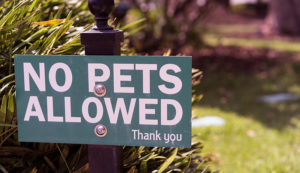Smoking in apartments is a contentious issue that has caused many disputes between landlords and tenants. However, both federal and state laws have something to say about smoking — even in private spaces like rental units. In addition, landlords may prohibit smoking under the rental agreement and an apartment smoker will face consequences should they ever break the rules.
Smoking in Apartments and Tenants’ Rights
Can I smoke in my apartment? A lot of tenants ask this question as many assume they should have the right to do what they want in their own homes. However, tenants do not have a universal right to smoke in their rental units. Moreover, no federal or state law universally grants people the freedom to smoke wherever or whenever they want.
Apart from this, federal, state, and local governments often restrict various types of smoking. Let’s take a look at each regulation and how they affect a tenant’s right to smoke.
Federal Law
The federal government regulates both tobacco and marijuana. Let us discuss the former first. Tobacco is generally legal and federal regulations do not restrict its use in private rental property. However, there is a restriction when it comes to public housing.
According to the U.S. Department of Housing and Urban Development (HUD), public housing agencies (PHAs) must prohibit certain types of tobacco in all indoor areas, including tenants’ units, and in all outdoor spaces within 25 feet of a building.
Because of this policy, PHAs must ban using pipes, water pipes, cigars, and cigarettes. However, the HUD leaves it to them to decide whether to ban e-cigarettes. PHAs are also free to create more stringent anti-smoking rules or regard their property as a smoke-free apartment complex. Regardless of their choices, though, tenants who live in public housing cannot smoke in their units.
Meanwhile, marijuana is not legal under federal law. Using it even privately may expose tenants to federal offense charges.
State Law
Apart from federal law, states and cities have enacted their own laws and ordinances regarding tobacco and marijuana use.
Tobacco
 Many states prohibit or restrict tobacco use around multiunit buildings because smoke can easily travel across shared spaces. State laws may even consider buildings with only two units as “multiunit buildings.”
Many states prohibit or restrict tobacco use around multiunit buildings because smoke can easily travel across shared spaces. State laws may even consider buildings with only two units as “multiunit buildings.”
State laws generally do not ban tobacco use altogether. Instead, it is prohibited in common areas and a specific percentage of units. However, some states and cities do have regulations restricting smoking in all rental properties, including single-family residences.
It’s important to note that anti-smoking laws vary in how they define “smoking.” Some rules may ban the use of cigarettes, cigars, and pipes but not other forms of smoking. However, if the laws in your area are unclear about how smoking is defined, it’s best to assume all forms of lighting and inhaling substances are included. Hence, it may also apply to vaping and e-cigarettes.
Marijuana
Now that we’ve addressed tobacco, let’s answer the question: can you smoke weed in an apartment? It’s best to assume all anti-smoking laws apply if marijuana is illegal in your state. If the state you live in makes no mention of marijuana, it’s best to err on the side of caution. This is because many laws define “smoking” as smoking any plant.
On the other hand, if your state allows medical or recreational marijuana, it’s best to refer to the relevant ordinance. If you want to be absolutely sure, consider contacting your city manager’s office.
The laws against smoking in apartments can be a bit blurry in terms of medical marijuana. Marijuana is illegal under federal law. If your state also bans cannabis, landlords have the right to stop tenants from smoking it. However, if medical marijuana is legal in your state, landlords who forbid its use may face a discrimination claim. Tenants may file a lawsuit, and courts may consider it a fair housing violation.
In this case, the best course of action is to remain silent on medical marijuana. If you want to control smoking within your rental property, consider banning all forms of smoking instead. Landlords can base these prohibitions on secondhand smoke and concerns about unpleasant odors.
Can You Get Evicted for Smoking in a Non Smoking Apartment?
 Is smoking grounds for eviction? It depends on several factors. Firstly, let’s assume the landlord has enacted a no-smoking policy as part of the apartment’s rules and regulations.
Is smoking grounds for eviction? It depends on several factors. Firstly, let’s assume the landlord has enacted a no-smoking policy as part of the apartment’s rules and regulations.
If tenants smoke in non-smoking apartments, smoking inside apartment units may be grounds for eviction only after repeated violations. However, if the landlord has included the no-smoking policy in the lease agreement, tenants can be evicted for smoking.
What about marijuana? Can I get evicted for smoking weed in apartment complexes? Even in apartments that allow smoking, marijuana use may be grounds for eviction. Landlords can do this if the lease agreement has an “illegal activity” clause since smoking marijuana is a crime under federal law.
However, keep in mind that eviction based on illicit activity clauses tends to vary depending on the circumstances. Many judges will not evict the renter if the renter does not have a history of crime or if the act is minor. This is especially true if marijuana is not banned under state law.
Frequently Asked Questions
Is Smoking in Your House Illegal?
Personal dwelling spaces are not considered public spaces and are not regulated under laws that prohibit smoking in public areas. However, smoking may be unlawful if you live in a multi-unit or public housing property.
Why Do Landlords Prohibit Smoking?
Landlords prohibit smoking to prevent secondhand smoke, prevent stains and odors, limit fire hazards, reduce neighbors’ complaints, and decrease insurance premiums on fire. However, it may also breach their duty to keep rentals habitable.
Know the Law
Tenants should understand the federal, state, and local laws before smoking in apartments. Moreover, they should review the lease agreement terms and the apartment’s rules and regulations before they smoke — or better yet, before they sign the lease agreement.
Are you in need of a reliable rental property management company? Find one today through our online directory!
RELATED ARTICLES:
- Summer Maintenance For Landlords: Getting Rental Homes Summer Ready
- Rental Property Maintenance Guide For Landlords
- How To Determine A Fair Rental Rate Plus Factors To Consider



 Owning a pet comes with a lot of responsibilities. While pets are a source of joy and entertainment, they also have needs.
Owning a pet comes with a lot of responsibilities. While pets are a source of joy and entertainment, they also have needs. When you allow renting with pets, particularly dogs, noise is a given. They can bark and disturb others in the building, which means you will have to field more complaints.
When you allow renting with pets, particularly dogs, noise is a given. They can bark and disturb others in the building, which means you will have to field more complaints. It is essential that tenants understand from the very beginning that pets are their responsibility. They must keep their pets in check at all times to avoid damage, injury, and noise.
It is essential that tenants understand from the very beginning that pets are their responsibility. They must keep their pets in check at all times to avoid damage, injury, and noise. Before learning how to handle rental lease violations, you must first understand what constitutes a lease violation. Tenants who want to lease a particular property or unit must sign a
Before learning how to handle rental lease violations, you must first understand what constitutes a lease violation. Tenants who want to lease a particular property or unit must sign a  Property damages are no joke — not only are they time-consuming to deal with, but they can also be very expensive.
Property damages are no joke — not only are they time-consuming to deal with, but they can also be very expensive.
 A limit on how many tenants can occupy a single rental property
A limit on how many tenants can occupy a single rental property Company
Company